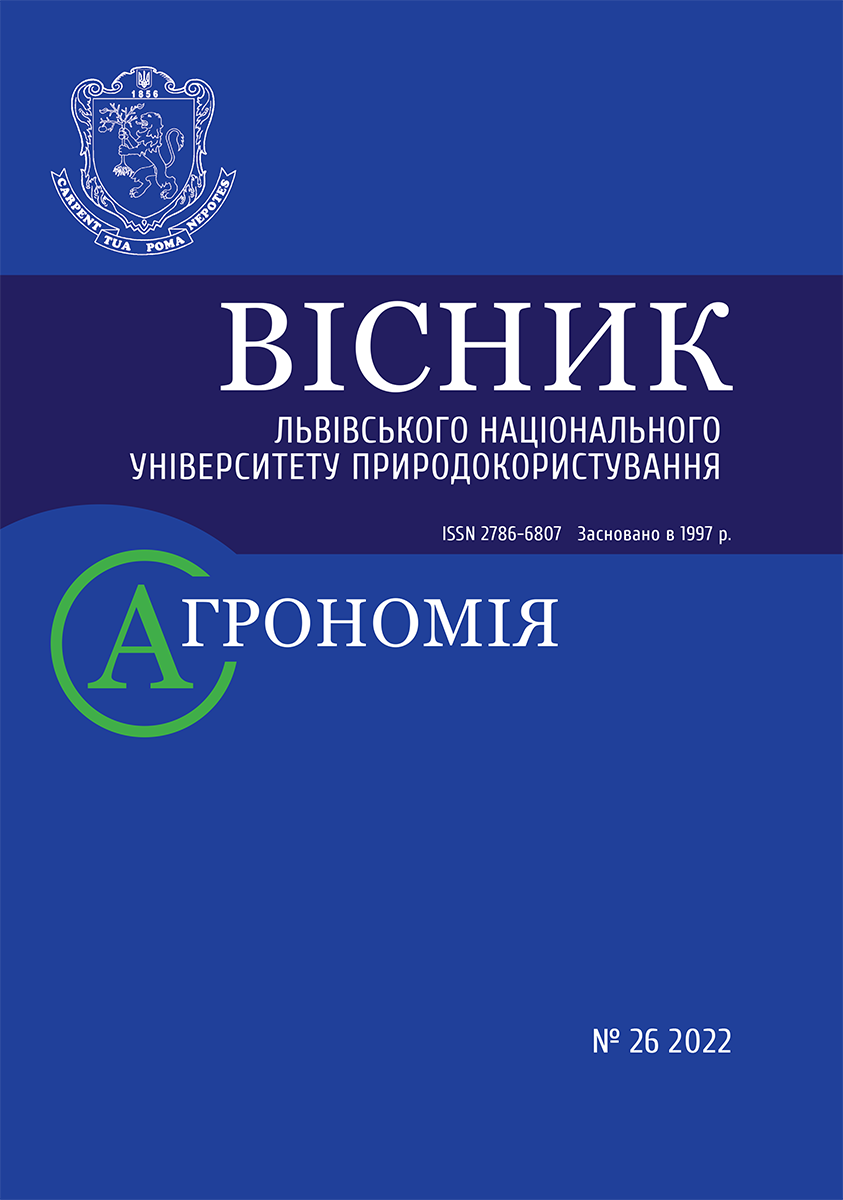GROWING ONION IN THE CONDITIONS OF LVIV REGION
DOI:
https://doi.org/10.31734/agronomy2022.26.110Keywords:
onion, hybrid, variety, yield, marketability, biochemical compositionAbstract
In the article, it is noted that the State register of crop varieties of Ukraine is actively enriched with new varieties, which are not much studied in the conditions of climate changes. The author stresses on the importance of the appropriate choice of an optimal variety or hybrid that is adapted to the conditions of growing.
The work names important factors, which should be considered while choosing the variety and hybrid. It is noted that onion is a long day plant, and therefore its growth is possible under the 13–18-hour day. Under later seeding and emergence of seedlings, as well as weeds, the plant growth processes are shifted to the period when the day gets shorter, and finally the plant vegetation lasts longer and eventually it produces a low quality onion. It is pointed that onion is a hydrophilic plant, consuming much moisture in the period of germination, leaf growth and bulb formation.
The research was conducted by using the variety and hybrids of F1 in the conditions of the research field of Lviv National Environmental University during the period of 2019-2020. The crops were treated by the method that is commonly suitable for the whole area of growing.
In the work, the author shows changes of onion yields in the studied period. For the experiment, the highly productive hybrids Bonus F1 and Skapino F1 were chosen. They provided the yield of 24.7 t/ha and 23.0 t/ha respectively, whereas the control variant – 22.7 t/ha (Stryhunivska Nosivska) on average for two years. It was marked that the highest commercial yield changed from 92.4 % (Dakapo F1) to 81.8 % (Damarkus F1), whereas the control variety supplied – 89.3 %. The least number of non-commercial onions was obtained from the hybrid Dakapo F1, i.e. 1.5 t/ha under the total yield of 18.9 t/ha. The largest number of non-commercial onions was produced by the hybrid Skapino F1, i.e. 3.6 t/ha, whereas in the control variant – 2.4 t/ha.
The biochemical composition of onions differed depending on the variety and hybrid. Dry matter of the hybrid Bonus F1 made 12.1%, whereas in the control variant, it was 11.2 %. A high content of sugars and vitamin C was marked in the hybrid Bonus F (9.3 %, 11.4 mg/100 g) and Skapino F1 (8.3 % and 10.3 mg/100 g) respectively.
Therefore, in the studied period of 2019–2020, the highest yield was provided by the onion hybrids of Skapino F1 and Bonus F1, and it was 23.0 t/ha and 24.7 t/ha (Bonus F1) respectively. The biochemical composition of onions was high as well.
References
Barabash O., Tarane L., Sych Z. Onion – the growing technology. URL: https://agromage.com/stat_id.php?id=1054 (Accessed 19 May 2022).
Crops of onion (peculiarities of growing and storage). URL: https://agrarii-razom.com.ua/culture/cibulya-ripchasta (Accessed 19 May 2022).
Koltunov V., Hordiienko I. What onion variety is better? Plantator. 2014. No 1 (13). P. 78–82.
Sukhorukova O. Onion alphabet. Plantator. 2021. No 5 (59). P. 8–41.
Zavadska O. Onion grown from seed. Plantator. 2017. No 2 (32). P. 88–90.


